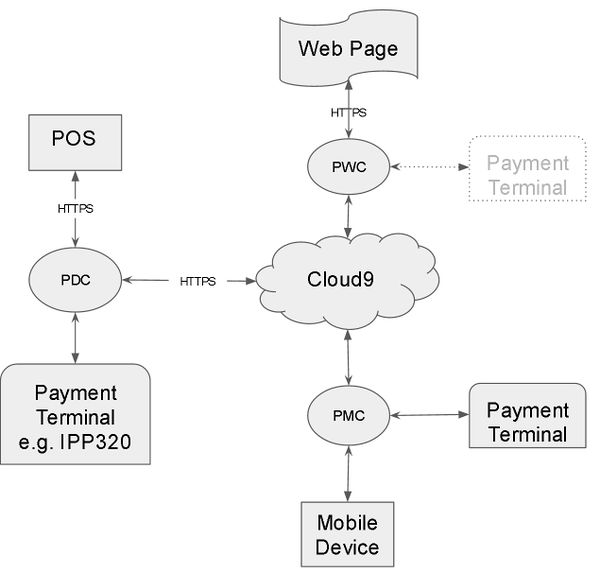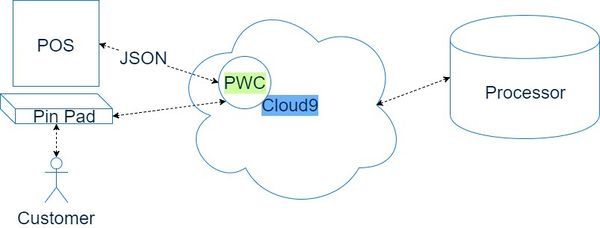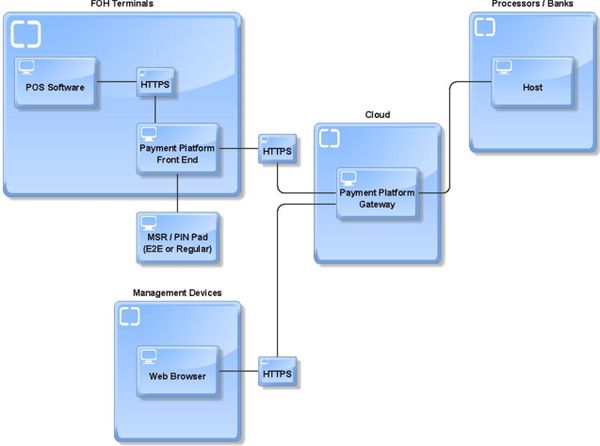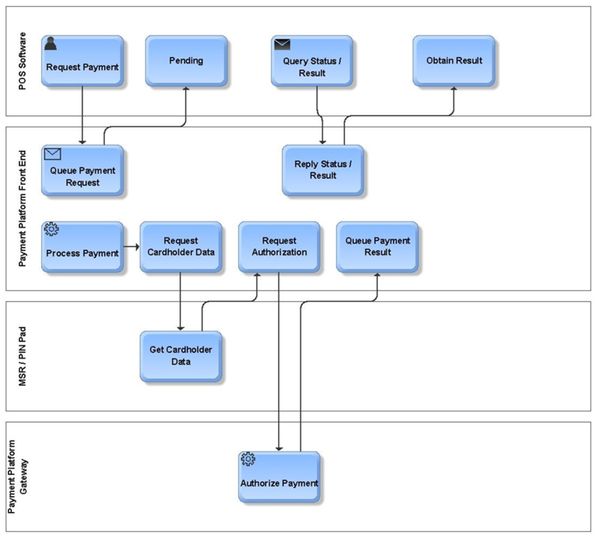Difference between revisions of "Payment Processing Developer Guide"
(→Payment Device Controller (PDC)) |
(→Simple Web Page) |
||
| Line 102: | Line 102: | ||
My client is a: | My client is a: | ||
==Simple Web Page== | ==Simple Web Page== | ||
| − | + | *[http://samples.c9pg.com/html/c9pg_client_html_test.htm Running HTML Client with active source code display] | |
| + | *[http://samples.c9pg.com/html/ Source Code] | ||
==Point Of Sale== | ==Point Of Sale== | ||
Revision as of 05:01, 1 November 2016
Cloud9 Payment Gateway Documentation. This site can also be reached at http://docs.cloud9paymentgateway.com
Contents
Overview
This section is under construction. Please contact us directly @ 561-392-9606 x 701 for information on limited Cloud9 release.
Environment & Client Options
Being a cloud based system, Cloud9 has few restrictions on the integration options. The following are some of the possibilities:
- Windows
- Unix/Linux
- Android
- iPhone
- OS X
- Custom
Services
Cloud9 Payment Gateway
Cloud9 is essentially a multi-merchant/multi processor switch. Cloud9 reduces the complexity of direct processor and payment terminal programming, certification and compliance by presenting a simple unified interface to the developer with numerous interface options. The core communications are conducted via TLS/SOAP/JSON with wrappers in C/C++/Java, if desired.
Back-Office Reporting Gateway
Cloud9 has a full suite of Back Office Reporting, which can be extended and scripted.
Payment Device Controller (PDC)
Optional Payment Device Controller (PDC) hides the complexity of low level communications with the payment terminals and adds Offline Store & Forward functionality, if desired.
The client (POS/web page/mobile device, etc) can communicate with the PDC, which will in turn control the payment perminal/pin pad and relate the processing instructions to the Cloud9 Payment Gateway.
This is the easiest form of integration and it is recommended.
Note: Variations of Payment Device Controller are Payment Mobile Controller (PMC) and Payment Web Controller (PWC), dealing with mobile and web based payment processing functionality respectively.
→ OPTION1: Local Payment Device Controller with Store and Forward Capability
| The client can communicate with a local Payment Device Controller (PDC) via SOAP, JSON or using the wizard like wrapper, written in C/C++/Java. |
→ OPTION2: No Local Software - Direct Cloud Connection to Cloud9 Payment Web Controller (PWC)
| The client can communicate directly with the cloud Payment Web Controller (PWC) via SOAP, JSON or using the wizard like wrapper, written in C/C++/Java. |
Payment Device Controller Setup
Please, see Cloud9 Payment Device Controller Setup
System & Process Diagrams
POS System Diagram
Payment Device Control Services
| The client can communicate directly with the cloud or Payment Device Controller via SOAP, JSON or using the wizard like wrapper, written in C/C++/Java. |
Cloud9 Process Diagram
Protocols
The following are the base protocols, used by the Cloud9 to interact between the components:
| Initiating End | Receiving End | Link / Protocol |
|---|---|---|
| POS Software | Payment Platform Front End | HTTPS |
| Payment Platform Front End | MSR / PIN Pad | RS232, etc |
| Management Browser | Payment Platform Gateway | HTTPS |
Message Format
The following is a sample XML message format. While, there are numerous wrappers available for C/C++/C#/Java/HTML programmers, the following will give a general idea of the simplicity of the interface:
Simple Purchase Payment Request & Response
<Request>
<Type>Purchase</Type>
<TotalAmount>10.00</TotalAmount>
</Request>
<Response>
<Result>Queued</Result>
<TrxToken>1234ABCD</TrxToken>
</Response>
Simple Payment Status Request & Response
<Request>
<Type>Query</Type>
<TrxToken>1234ABCD</TrxToken>
</Request>
<Response>
<Result>Approved</Result>
<ApprovedAmount>10.00</ApprovedAmount>
<AccountBalanceAmount>50.00</AccountBalanceAmount>
<AccountType>Credit</AccountType>
<AccountAssnCode>VS</AccountAssnCode>
<AccountNumber>411111XXXXXX1111</AccountNumber>
<AccountToken>7890XYZ</AccountToken>
</Response>
Integration Options
Please choose the integration scenario below, to dive into more detail: My client is a:
Simple Web Page
Point Of Sale
In this section we will discuss the integration options for developers of Point Of Sale (POS) systems.
There are two main options:
- →POS uses a payment terminal/pin pad (DEFAULT/Card Present scenario)
Proceed to the Cloud9 Payment Device Controller API Guide - POS does NOT use a payment terminal/pin pad (Card Not Present scenario), or you have already integrated a pin pad into your system
Proceed to the Cloud9 Direct API Guide
Android
This section is under construction. Please contact us directly @ 561-392-9606 x 701 for information on limited Cloud9 release.
iPhone
This section is under construction. Please contact us directly @ 561-392-9606 x 701 for information on limited Cloud9 release.
...
From the makers of Cloud9 Payment Processing Gateway and Creditline Credit Card Processing Software



